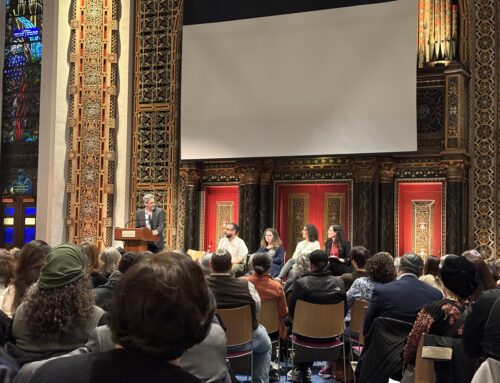Yehoshafat Harkabi’s most important book for the contemporary period is his 1988-89 work Israel’s Fateful Hour, which was published in Hebrew two years before and is largely a reworking of his 1982 book The Bar Kochba Syndrome. Shimon Bar Kochba was the leader of an unsuccessful revolt in Eretz Israel—mostly in Judea—against the Romans from 132 to 135 CE. Because the revolt lacked its own chronicler comparable to Josephus, the chronicler of the Jewish Revolt of 66 to 73 CE who had begun as one of its leaders before switching sides to save his life, few firm facts about it are known. Harkabi did research using the rabbinical lore about Bar Kochba, known to his opponents as Bar Kosiba—son of a lie—rather than Bar Kochba—son of a star. He then used what little the Romans wrote about the revolt and the archaeological record from the excavations of Yigael Yadin in the 1960s and others to piece together an account.
Harkabi indicts Bar Kochba for an abject lack of realism in planning and carrying out a revolt that had no real hope of ultimate success, and that resulted in the destruction of many of the Jewish villages in Eretz Israel, the banning of Jews from Jerusalem, and the start of the mass exodus of Jews from Eretz Israel to the diaspora. Harkabi clearly sides with the rabbis regarding the legacy of Bar Kochba.
Why is this important? Zionist ideology in the prestate and early state eras mythologizied historical figures from the Second Temple period, from the Hasmonean Maccabees to Bar Kochba. This is because the Maccabees restored Jewish sovereignty over Eretz Israel by defeating their Greek colonial masters, and even the two great revolts against the Romans triumphed briefly, before being crushed. Masada became the great pilgrimage site of Labor Zionism and was then adopted by the IDF as the place for swearing in graduating recruits of elite units.
Bar Kochba was the partial inspiration of the Revisionist youth movement Betar, founded in Riga, Latvia in 1923. Betar was the name of the last Jewish stronghold to fall to the Romans in 135, and was also used as an acronym by the Revisionists for Brit Trumpeldor, the Alliance of Trumpeldor. Yosef Trumpeldor was the Jewish veteran of the Rusian Tsarist army, who lost an arm in the Russo-Japanese war of 1904-05. He then immigrated to Palestine and during World War I helped to recruit the Zion Mule Corps in 1915 that fought at Gallipoli and served as the core of the Jewish Legion that helped to conquer Palestine in 1918. Trumpeldor fell defending Tel Hai, near today’s Kiryat Shemonah, against Arab attackers in 1920. Both the Labor Zionists and the Revisionists turned him into Zionism’s first martyr.
Writing in the 1980s during the era of Menahem Begin and Yitzhak Shamir, the first period of Likud rule, Harkabi saw a tendency for a romantic politics of gestures, no matter what the likely and actual results. Several of Begin’s biographers have noted the influence of Polish nationalist romanticism on Begin. And Shamir, one of the three leaders of the 1940s Lehi underground, carefully cherished the memory of Yair—Avraham Stern—who died from British bullets in a Tel Aviv apartment in February 1942. Stern had instigated a revolt that had little hope for success, and was incongruously launched even while the British were fighting the Nazis in North Africa. Under the influence of Begin, the Likud transformed the memory of the Irgun and Lehi undergrounds into a mythology comparable to that of the Masada cult.
Today, some three decades after Harkabi first wrote about Bar Kochba, we have the reality of Netanyahu continuing to settle the West Bank in defiance of Obama and most of the world. We have Netanyahu intervening in the politics of Israel’s only reliable great power ally at a time when he claims that Israel’s existence is on the line. And we have the phenomenon of the Hilltop Youth, the alienated offspring of the settlement movement and of ultra-Orthodox communities, who engage in settlement activity, even in defiance of the state.
The Labor Zionist haShomer (civil guard) gave inspiration to Betar, which then delivered the Revisionist undergrounds of 1937-48. These then gave rise to the Likud in the 1970s and 1980s and allowed them to colonize the West Bank. The West Bank settlers have now given rise to the Kahanist Hilltop Youth—messianic nationalist anarchists. So in approximately the same amount of time that it took the memory of the Great Jewish Revolt to produce the ensuing Bar Kochba Revolt, the Zionist movement has gone from protecting isolated Jewish settlements to Jewish settlers defying the Jewish state on the West Bank, and carrying out terror attacks against Arabs in revenge for state action.
Harkabi died in 1994 just as the Oslo process was getting underway. His most important legacy is not his analysis of Arab attitudes towards Israel published in the mid-1970s but his analyses of Israeli politics published in 1977 and during the 1980s.




Leave A Comment